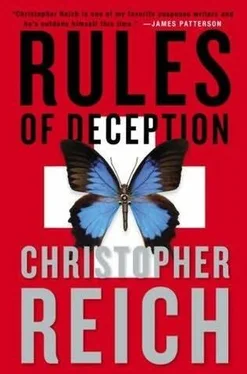“Fly well,” he said, brushing his fingers against the drone’s steel flesh.
He returned to the living room with its view of the airport. One wall of the living room was given over to his instruments. Monitors for the radar and nose camera. Flat-panel arrays broadcasting speed, altitude, position over ground. In the center of the array was a keyboard with a joystick positioned to either side. He climbed into the seat and spent a moment getting comfortable.
“Engines on,” he called as he flipped on the ignition. A red light blinked five times, before burning steadily. Though he was not inside the drone, he could feel it shudder as it came to life. A thread of excitement ran along his spine. He’d waited twenty-eight years for this moment. The date was inscribed in his mind, no different than a plaque at a historic site. April 24, 1980.
Operation Eagle Claw.
He, John Austen, then a major in the United States Air Force, had been chosen to fly the lead Hercules C-130 into the Iranian desert on the first leg of a desperate, overly ambitious plan to rescue fifty-three hostages from the United States embassy in Teheran. Aboard were seventy-four members of the newly created Special Operations detachment trained by Colonel Charlie Beckwith and led by Lieutenant Colonel William “Jerry” Boykin.
The flight into the desert had gone according to plan, the only incident being a period of seven minutes when the plane had passed through a haboob, a blinding dust storm in the Dasht-e-Kariv, the Great Salt Desert, that spanned four hundred miles in the southwestern corner of the country. The plane negotiated the dust storm well enough, the turboprop engines holding up despite the onslaught of grit and sand. He landed without problem at a preordained spot christened Desert One. Eight Sea Stallion helicopters followed, inbound from the aircraft carrier USS Nimitz in the Arabian Sea. The choppers were to ferry the elite soldiers into Teheran, where they would free the diplomats and bring them back to Austen’s aircraft for the return flight across the Persian Gulf to Saudi Arabia.
Disaster soon struck.
One of the helicopters landed disabled, its hydraulics severely damaged by the same dust storm that Austen had himself flown through. Another had turned back in mid-flight, lost and fearing a systems failure. With only six functioning helicopters instead of the eight planned, there would not be enough space to carry all of the rescued hostages out of Teheran. The mission was called off.
As one of the helicopters took off, its rotor wash stirred the fine desert sand into a maelstrom. Blinded, the pilot lost his bearings and flew into Austen’s C-130, parked fifty meters away. The chopper’s rotor blades sliced through the Hercules main stabilizer. Unbalanced, the helicopter toppled over the aircraft, gushing fuel and engulfing the plane beneath it in a fierce inferno.
Austen remembered the unexpected jolt to his plane, the burst of anger and confusion- What the hell’s the problem now? he’d wondered-the thoughts seared by a blinding flash and cauterized by a wave of intense heat that in the blink of an eye had swallowed him entirely. Strapped into his seat, the flames licking at his flesh, he repeated the words, “I’m dead, I’m dead.”
But he wasn’t dead. Unstrapping himself from his seat, he clawed his way out of the inferno. He walked out of the wreckage, his flight suit, his hair, his entire being engulfed in flame. An apparition from hell.
Several troopers knocked him to the ground and rolled him in the hard desert sand, extinguishing the fire.
He woke up inside a helicopter taking him to the USS Enterprise . A navy corpsman was hunched over him. Austen reached up and grasped the cross dangling from the corpsman’s neck. A jolt of salvation ran from his hand up his arm and through his body. Light surrounded him. Not flame, this time, but a healing light. In that moment, Austen saw Him. He saw the Lord, his Savior. He listened to His words and he promised to obey them. He knew that he would live. He had been given a mission to fulfill.
He, John Austen, who had not set foot inside a church since his confirmation at the age of thirteen, a user of alcohol, a womanizer who trampled on the sacred vows of marriage, a gambler who took the Lord’s name in vain, a heathen in all senses of the word, had been chosen to usher in the Second Coming of his almighty Lord, Jesus Christ.
That was twenty-eight years ago.
Austen ran through his preflight check. Ailerons. Flaps. Oil. Antifreeze. The nose camera came to life. He was presented with a view of the street outside his home. A series of lights had been set down on either side of the runway to act as boundary markers.
He pressed the throttle and the drone edged forward.
The Mahdi I was ready to fly.
Inside the command center, von Daniken put the binoculars to his eyes and studied the residence from behind the protection of lace curtains. The home purchased by the Excelsior Trust was located at Holzwegstrasse 33. It was a sturdy two-story residence designed without the least imagination. An ivory stucco box with a gray slate roof. A garden surrounded the property. A balcony extended from one of the bedrooms on the second floor. But what interested von Daniken most was the road passing in front of it. Cleared of snow, it ran straight and level for five hundred meters. To his eye, it made the perfect runway.
He moved his binoculars to the left. A stand-alone shed occupied a corner of the property. It didn’t appear large enough to house the drone, but then again, Brigadier General Chabert had told them that the drone could be assembled quickly. Otherwise, the house appeared quiet, giving no clue to any activity within.
The airport security fence began hardly ten meters away. In one direction, it climbed a mild rise then turned north and ran in a straight line for three kilometers bordering a lush evergreen forest. In the other direction, it cut through a broad meadow buried in snow. Farther on, the meadow yielded to a vast apron of concrete lit by tall, blinding lights. The southernmost edge of Zurich Airport.
Somewhere a plane was taking off. The noise grew in volume as the aircraft approached. Within seconds, the roar of the engines had drowned out every other sound.
He lowered the binoculars and returned to the dining room. “They chose well. No neighbors. A good view of the airport. Unobstructed line of sight.”
“And not just of the airport,” added a short, stocky man with curly black hair and a gambler’s pencil-thin mustache. His name was Michael Berger. He was captain of the Zurich police department’s special assault team. It would be Berger who would be first in the door to storm the house. “Whoever’s inside will be able to see us coming for one hundred meters. How many do you reckon there are?”
“We don’t know for certain, but we’re estimating that there are at least five. There may be more.”
“Armed?”
“Count on it. They’re professionals. They took possession of twenty kilos of Semtex-H plastic explosives a few weeks ago that’re almost certainly in the drone.”
Berger nodded grimly, his eyes calculating his odds of success and survival. “We’ll go in from the air. Two choppers. Rope down our team. We’ll time it to coincide with the takeoff of a passenger jet. The helicopters are equipped with engine baffles that permit them to fly in near total silence. We’ll send a second team up the main road and hit the house from the front. Your friends won’t hear a peep until we break down the doors. The entire operation should take less than sixty seconds.”
Von Daniken made a show of studying the drawings. “How many times have you done this?”
Читать дальше












